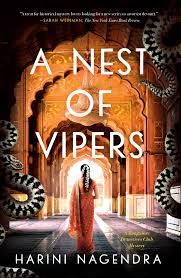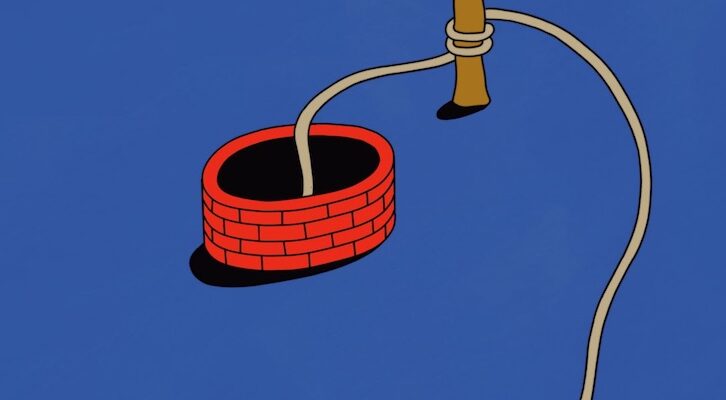From ancient times, India has had a rich tradition of magic, active and thriving even today. Lord Indra, Hindu God of the heavens, who wields the power to control thunder and lightning, is also believed to be the world’s first master magician. His biggest magical creation is the Indrajala, or maya, the web of illusion in which our lives are embedded. The Atharva Veda, one of India’s oldest and most influential sacred texts, is rich with descriptions of magical rituals, incantations, charms and spells. Seals from the Indus Valley site in Harappa, dating to the Bronze Age, show evidence of shamans wearing horns.
In colonial India, jadoo, magic, was intertwined with street theatre and animal acts – performed on the humblest of streets, and the grandest of stages. In his 1863 book Mumbaiche Varnan (The Story of Bombay) writer Govind Narayan provides a fascinating eyewitness account of the city’s streets, filled with snake charmers, rope dancers, magicians, conjurers, tumblers, monkey and bear handlers, and acrobats performing somersaults on horses.
Videshi or foreign visitors were fascinated by what they saw, bringing Indian jadoo tricks to world wide attention. Especially popular were the famous Indian rope trick (featuring a rope which, thrown into the air, immediately became rigid like a ladder – after which the magician’s assistant, usually a small boy, climbed up the rope and disappeared into thin air) and the mango seed trick (where the magician planted a mango seed in a pot, watered it, covered the pot with a cloth – and whisked it away to reveal a small tree, laden with fruit).
As John Zubrzycki describes in his book Jadoowallahs, Jugglers and Jinns, Western magicians developed a love and hate relationship with the Indian world of jadoo. Alfred Silvester, a British magician who moved to the USA in the mid-19th century, called himself the ‘Fakir of Oolu’, dressing up in flowing robes, turban on his head, to perform his signature trick, of floating in mid-air, apparently unsupported. In a strange turn of events that speaks to the increasingly globalized world of the 19th century, Silvester and his family then embarked on a round-the-world trip in 1878, taking his bowdlerized version of Indian magic back to India and Ceylon (Sri Lanka), and then to Africa, where they performed to packed houses in Mauritius and the African Cape.
Magicians like Howard Thurston and Harry Houdini, perhaps the best known American magicians of their times, further exploited the obsession of the west with the oriental, battling each other for their share of the spotlight. They travelled to India to learn local jadoo, and then took it back to the USA, adapting what they had learnt and using it as a centrepiece in their acts. Often, it was a direct, even brazen theft of ideas. Harry Houdini capitalized on the American audience’s fascination with the exotic Orient, dressing up as a flute-playing Indian fakir in blackface and white robes at the Chicago World Fair in 1893. Thurston paid Indian street magicians to perform in his hotel room, keenly watching them, dissecting how they did it, and then building on it for the stage. At the same time, he openly sneered at the street fakirs whose ideas he stole. Writing about Indian magic tricks in an April 1927 issue of Popular Mechanics, he dismissed their work as of ‘crude construction,’ ‘far inferior’ to the work of American magicians like himself.
Silvester, Thurston, Houdini and dozens of other American, British and Australian magicians sought to assert the superiority of Western modernity and rational science over what they termed Oriental superstition – while at the same time amassing vast collections of books on Indian traditions of spiritualism, witchcraft and tantric magic, eagerly studying them to pick up hints that they could use to devise new routines. Of course this was only in keeping with established colonial traditions of appropriating the knowledge of the colonized, using it to their own benefit while simultaneously deriding its foundations – in fact performing another, highly perfected sleight of hand.
At the same time, Indian magicians began to become increasingly connected to the global world of magic, through exposure to journals and magazines, and international societies of magic. By the late 19th and early 20th century, it was becoming increasingly common to find Indian magicians in England and the USA, wearing coats and top hats. Perhaps the oldest of Indian magicians to visit Europe was the south Indian juggler Ramo Samee, who performed in Europe from 1810-1844, also doing a tour of the USA. Sadly, Ramo Samee died in poverty, but over a century later, Bengali magician PC Sorcar found far greater success, calling himself not just India’s, but the World’s Greatest Magician. Sorcar is still remembered for a very famous BBC program he did in 1956, where he sawed a woman assistant in half. He intentionally made it seem that the trick failed, leading to a ghastly accident. The audience panicked, and the BBC had to issue a clarification in the newspapers to let people know that his assistant was fine – it was just a trick, and a very successful one at that. This performance catapulted Sorcar to international fame.
A Nest of Vipers, my latest book – the third in The Bangalore Detectives Club series – is set in 1923, in colonial India. The book begins at the time of the visit of Edward, Prince of Wales (later King Edward VIII, one of the shortest reigning monarchs in British history) to several parts of India. Edward expected to be greeted by cheering crowds – instead, he was met by rioting crowds, violence on the streets, and increasingly strident calls for the British to depart from India.
I seek to explore how the world of jadoo interfaced with the growing calls for Indian nationalism during this period, by creating a fictional master magician Das. A nationalist at heart, Das refuses to use the term magic – he calls himself a jadoogar, proudly claiming his heritage. At the opening of the book, Das disappears in front of large crowds while performing a magical act – and does not reappear, as he was supposed to. His son turns to Kaveri, begging her to help him. Is Das alive or dead? Was his disappearance planned and staged – or has he been abducted, perhaps even killed?
When Mrs. Kaveri Murthy, now firmly established as Bangalore’s leading woman detective, begins to investigate – she discovers a world of smoke and mirrors. Nothing is as it seems, and every lead she finds seems connected to the Prince’s upcoming visit to Bangalore.
In this, Kaveri’s deadliest case yet, the character of Das was inspired by PC Sircar. Sircar passed away in 1971, the year before I was born. Yet I often watched his performances, routinely telecast on Indian television when I was a child. Despite the bad quality of the recording, and the limitations of the black and white television set on which we viewed his magic acts, he was mesmerizing. I also vividly remember his beautiful assistant, who acted as a live prop. Did she have magical abilities of her own? We, the viewers, never found out. By including a note about Das’s wife’s death, which takes place a few years before the opening of the book, I also examine the roles that women magicians were allowed to engage in at the time – apart from being sawn in two at the end of each performance and then put back together again.
1920s colonial India is a fascinating period to write about, but also deeply disturbing. My parents were born in colonial India, and many of my older relatives took part in the freedom struggle. I use the medium of the book to explore my own discomfort with the manner in which Indian traditions and local knowledge systems were being exoticized and exploited for commercial benefit by western magicians – while mocking and deriding their ideas. Sadly, intellectual theft continues to be common today, with indigenous communities often at the receiving end of exploitation. The world of mystery fiction, especially historical mystery, offers rich possibilities to examine the antecedents of many of these issues. I have enjoyed delving into the world of Indian jadoo, and I hope my readers do as well!
***





















